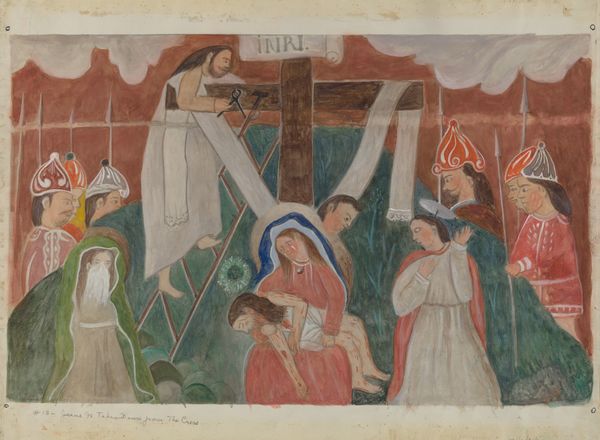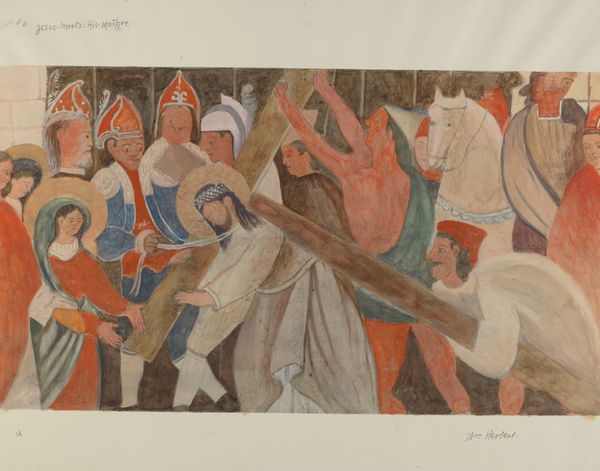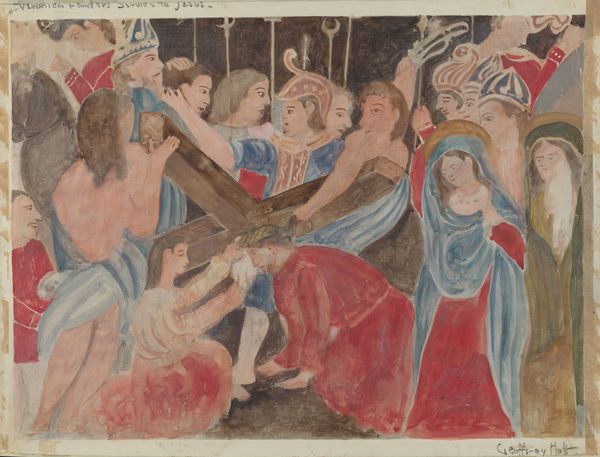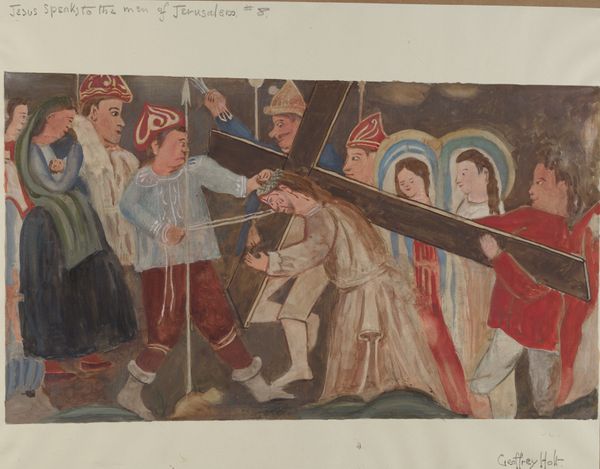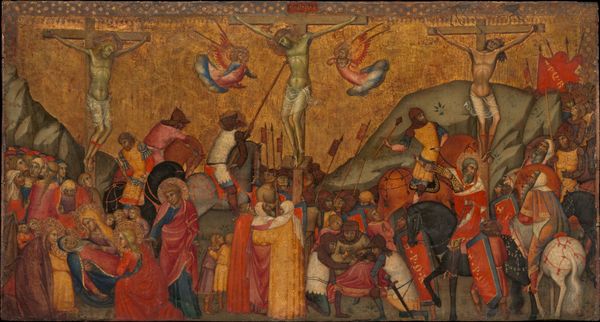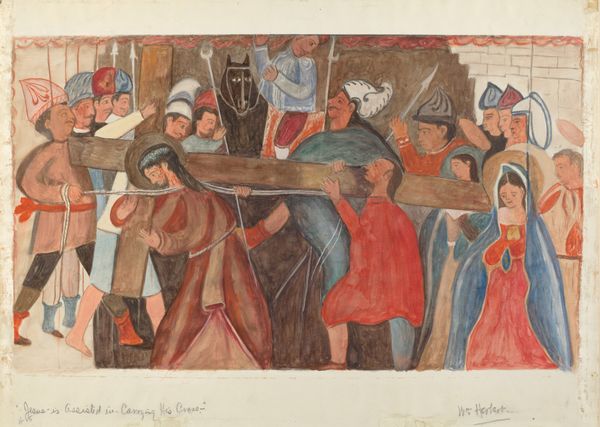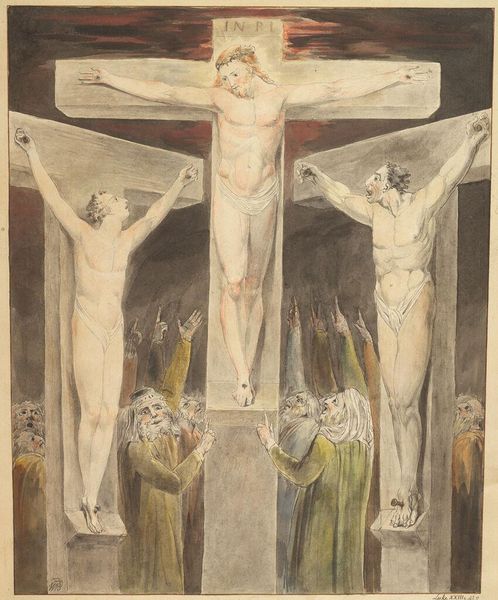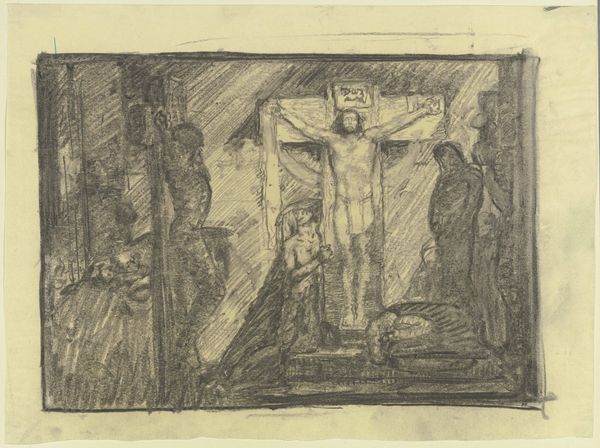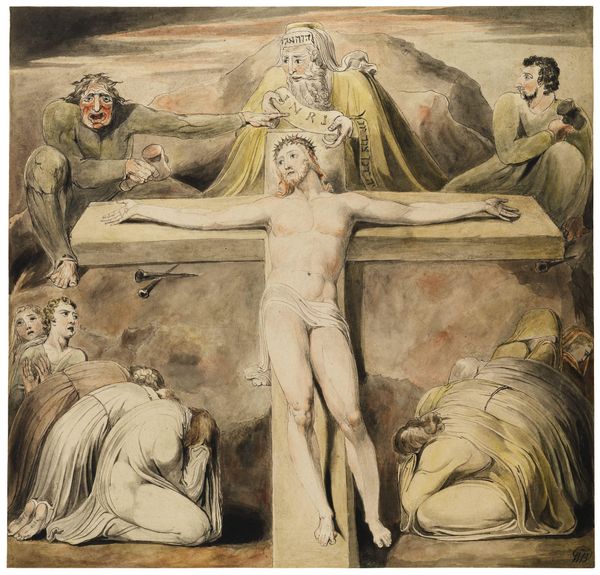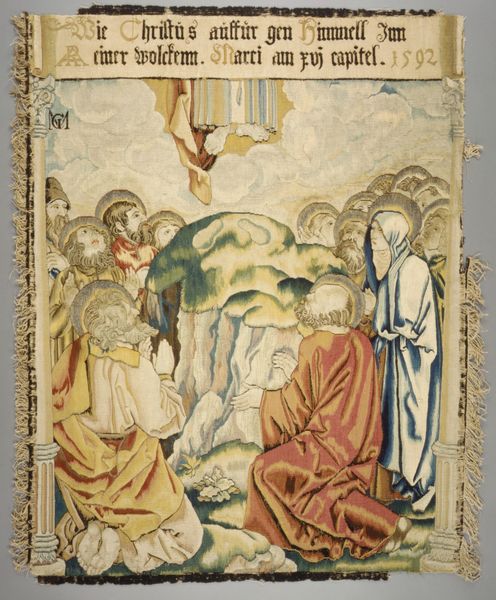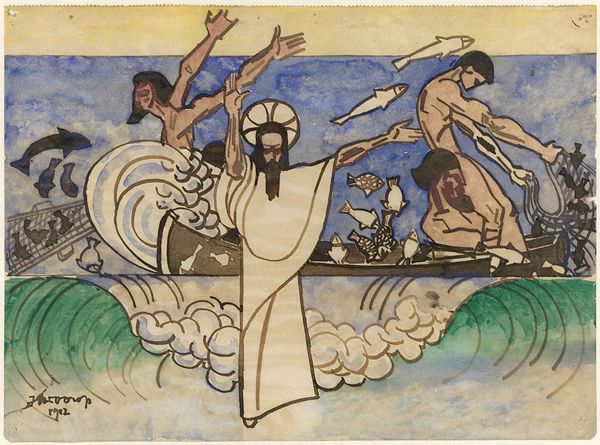
Station of the Cross No. 12: "Jesus Dies Upon the Cross" c. 1936
0:00
0:00
drawing, painting, watercolor
#
drawing
#
narrative-art
#
painting
#
figuration
#
watercolor
#
history-painting
#
watercolor
Dimensions: overall: 44.6 x 53.5 cm (17 9/16 x 21 1/16 in.) Original IAD Object: Approximately 30 x 50 in.
Copyright: National Gallery of Art: CC0 1.0
Curator: Today we are looking at William Herbert’s watercolor drawing, “Station of the Cross No. 12: "Jesus Dies Upon the Cross," from around 1936. Editor: The initial impact is, well, unsettlingly cartoonish for such a serious subject. The figures look almost… playful, despite the clear agony. It feels jarringly at odds with the somber tone I expect. Curator: It’s precisely that discordance which makes it so fascinating. Herbert approaches this iconic scene, ubiquitous in Western art, with an almost childlike candor, rendering it afresh. Consider, too, the medium—watercolor, known for its transparency and fluidity, layers color with surprising opacity, contrasting with the density and perceived solidity that a medium like oil would lend this theme. Editor: Good point! And that choice of material, readily available and fairly inexpensive, democratizes the image, I think. Rather than monumentalizing suffering, Herbert keeps it immediate, tangible, made by hand with accessible means. It reframes the event away from the grand narrative of established power and centers on its accessibility and presence in the common. Curator: Yes! I am wondering, though, if this "accessibility" truly mitigates that slightly unsettling cartoon quality. Are the simple renderings comforting, or are they deflecting from fully embodying what this sacrifice represents? The moon and sun even appear to watch with wry amusement—a somewhat puzzling feature! Editor: It’s all these tensions! We have rough paper, cheap paint, and recognizable visual shorthand to grapple with themes that would otherwise receive, perhaps, very reverent displays. To me, those smiling celestial orbs drive the knife home: This IS what it means to endure, it insists! In fact, the piece does have a "here and now" urgency, even beyond the historic subject matter. Curator: Agreed! The combination—a humble materiality confronting immense themes—strikes an intriguing and unique balance. Editor: And thinking on those layered tensions—Herbert urges a contemporary material reassessment and almost subversive aesthetic, yes? Curator: I would argue precisely that, it's almost audacious in its perceived simplicity!
Comments
No comments
Be the first to comment and join the conversation on the ultimate creative platform.


